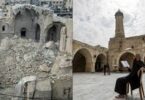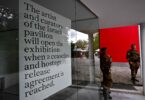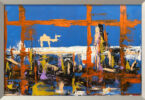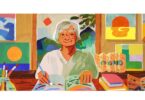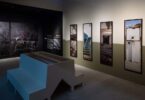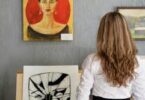Monitoring Desk
If the artist is a visionary, one who sees through time and space, and by the power of their foresight, imparts that potential energy over to those who share in the grace of their talent and intuition, then they are, for lack of more transcendent words within the late capitalist mire, a valuable commodity. The physicality of their exposure to the realities of institutionalization, with its industrious accounting for the gritty details of financial expense and prime investment, runs parallel to a world of gambled debt and related symbolic schemes that make the art world look like a prudish monk compared to its excesses.
Yet, in the interest of its origins, steeped in the humanist values that gave way to liberal, democratic entrepreneurship among makers. They are workers, although trading in ideas metaphorically or mimetically, lathered onto canvases, or chipped away from blocks of stone. Producers of contemporary art must confront the more vestigial components of the zeitgeist with a sharp edge and be prepared to sever that ghost limb from the collective body that so doggedly maintains ties to the anciens regimes of its former, or anachronistic, superiors.
Museums, simply, have a troubled relationship to the art of their contemporaries who defy post-colonialist methods of collection, ownership and display in favor of practices that would foment the stimulation of indoor, public spaces that are truly inspiring, which strike at the classical Grecian roots of museology, a place for the muses. Across northern Europe and the Americas, however, deaccessioning is increasingly becoming synonymous with repatriation as curators and artists reconcile with their respective national consciences.
“Precaution,” at Arter, addresses the complex thought processes that play into the multitiered readiness for the future in which art lovers are more and more political. Its title follows from an installation piece by Canan Tolon, readapted after its initial exhibition in 2011 at Arter’s prior space on Istiklal Avenue. Approaching the work is like sliding into an antique, neglected waterfront Bosporus mansion in the dark watches of the night, when the ghostly late Ottoman spirit of its foundations rattle with so many deaths, generations who passed into shade much like the history of old art exhibitions, archives lost to the whims of postmodernity.
Under a low raincloud
Tolon’s artistic, architectural erudition comes forward in her piece, “Precaution,” sensitive with respect to time’s effect on material. It is reminiscent, also, of the work of a younger Turkish artist, Gülşah Mursaloğlu, whose process-based sculptural installations examine the surface of industrial products and their decay. Both focus on temporal constructs, to reflect the mutability of their chosen mediums. When walking beneath the rusty scaffolding and torn rags of “Precaution” the ambiance is unsettling because it is not the facade or display that is subject to decomposition, but its rickety setup, albeit centered.
The exposure of destabilizing factors behind the scenes of the apparent gloss and glam of cultural production is all the more disturbing. It is like watching an actor break character, only to realize that they do not exude stereotypical Hollywood star power, but a mere whiff of human normalcy, the everyone everywhere, without a spotlight, the anonymity of the unknown, yet utterly familiar any-person. Within the show, according to Baykal’s perspicacious selection, the artists convey, subvert, question and document these themes with creative perspective and sometimes quite amusing reinventions of visual and conceptual meta-narratives.
One specific video work from “Precaution” comes to mind, titled, “Crisis and Control” (2013) by Burak Delier. It is essentially a short essay film consisting of interviews with office workers who practice yoga as a therapeutic outlet in the midst of their busy lives. They speak to the camera while holding the various poses they’ve learned from the ancient Hindu craft of physical enlightenment, enacting the universal dualism inherent in the body, whereby the contrast between stretching and relaxation runs parallel to the inhale and exhale of breath.
While standing on his head in the middle of a hallway, a man in a suit confesses the emotional stress he endured after having to fire a colleague. That scene, among others, makes “Crisis and Control” not only entirely watchable in full but also riveting throughout, as it enters into the unsightly bowels of work psychology. A comparable and equally mesmerizing video piece is by the labor-oriented videographer Ali Kazma, titled, perhaps not without a sense of humor, “Noah’s Ark” (2019-2021). For anyone who has been attending exhibitions and the events at Arter’s Dolapdere museum, it is a staple record of Istanbul’s art heritage.
After the fog clears
While the singular and multivalent collections at Arter enjoy the ongoing effects of their historically revitalizing, spatial makeover, the exhibition of Kazma’s video, “Noah’s Ark” is a well-polished mirror against an otherwise one-sided reflection within the rarefied art world of Istanbul and its slowly expanding roster of prominent artist nationals. Yet, with a critical grasp of its global import, “Precaution” platforms the voices of artists from across the region, particularly Alicia Kwade of Poland and Lamia Joreige of Lebanon, as well as Nasan Tur, who is Turkish by descent and affiliation within Eurasia’s complex sociopolitical realm.
Kwade’s ready-made sculpture, “Hubwagen” (2012/2013), recalls the aesthetics of Palestinian installation artist and filmmaker Jumana Manna, or, closer to home, the deviant and subtly dysfunctional furniture of Can Küçük. Joreige’s work at “Precaution” is deeply prolific, comprehensively scrutinizing Beirut’s struggle with museum collection in the face of postcolonial art infrastructures that have disempowered institutions on the fringes of the Eurocentric culture sector, with its dusty archaeological fetishes and economic impositions that hang like a shadow over the Levant in the name of restorative technology and global legacy.
As part of Joreige’s piece, “Objects Missing from the National Museum of Beirut” includes a textual presentation of a book with that title within a vitrine. It itemizes lost artifacts like “Stele of the Pharaoh Ramses II with a Hieroglyphic Inscription,” a basalt relief found in Tyre from the 13th century B.C. The dizzying kaleidoscope of the past’s layers of provenance is a perennial matter of serious discussion where objects and their curation are concerned with respect to the overlapping geographical Pandora’s box of the Middle East. It is a region defined by shared cultures but whose peoples are confounded by the rapid advances of modernism, be they artists, or anyone whose belongings are interwoven with where they belong.
Courtesy: (Arabnews)

